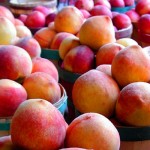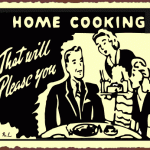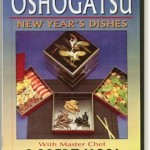 Dear baby bird M,
Dear baby bird M,
This morning I found a car rental receipt for May, 2007. I had to do a double take—the date was May 17, and I had one car seat so your older sister was with me, and I flew in and out of Sacramento…but the year was 2007. Were you born yet? I had to ask myself. No: that was one year before you were born in May 2008. About five months before we knew about you.
When I realized this, I was stunned. I can’t believe that it has only been two and a half years since you were born. Since that day, I have felt so protective of you, my second child, second daughter. Your dad and I are oldest kids, and now your big sister’s an oldest kid. You’re a youngest kid in a household of oldest kids. So I have felt protective of you in different ways. Maybe you don’t always want to play what your big sister is playing (although this is rare, it’s true); maybe you don’t want to watch that movie that she chose; maybe, gasp, you have your own choices and preferences. I want to protect yours, if I can. I understand big sister urges all too well: we want to express our love through teaching, protecting, guiding. But I want to honor you, too.
When I knew I was pregnant with you, I remember being worried. How could I love you like I love your sister? And of course, the answer was that I can’t. And I don’t. Loving your sister taught me that I could love someone differently than your dad—but just as equally, just as helplessly, just as deeply. You taught me that of course I can love a daughter differently from your sister. And yes, just as equally, just as helplessly, just as deeply.
Now, I know there are older and younger sibling gripes. Your dad and I try to manage these as best as we can. Older siblings gripe about how younger siblings get more attention for being “the baby.” But younger siblings gripe about being treated permanently like children. Older siblings gripe about having to go first, or “breaking parents in” to the first sleepover, the first driving lesson, the first time away from home. And younger siblings gripe about how little documentation there is for them, compared to the oldest child.
And oh, this last one is so true. I’ve talked to a number of parent-friends who have two or more kids, and it’s not just you. I wrote down daily, weekly, monthly things about what your sister was doing at this age. Milestones: first steps, first words, first meals. She had her own web page. We do take pictures of you, but not as many; we update your shared web site every three months, rather than every week or every month. I have felt, keenly, the lack of documentation that we have had for you, compared to what we had for your sister. It happened with me, too—there are so many picture albums of just me, the oldest and for four years, an only child—and not as many picture albums of your auntie, my younger sister. So this is something like an apology for not having enough pictures of you, or equal documentation of you.
But it is also a letter to tell you this: if the older sibling is about the magic of the milestones, the younger sibling is about the magic of the middles.
When your dad and I held your sister as a baby, we were terrified most of the time. We didn’t really know what or whom or how to trust, as parents. Good students and lifelong readers to the core, we consulted What To Expect (both before and after her birth) every week. We loved it, but we were also gut-scared.
And you? By the time you were born, we had learned better how to trust ourselves. Perhaps not surprisingly, one of my very favorite pictures in the world was taken on the day you were born. It’s a picture of you, burritoed up in the white flannel hospital blanket, and your big sister C, with the biggest look of surprise, looking up and laughing. I asked my sister, your auntie, to take these pictures, as many as she could. I knew that I’d still be in surgery for a little while after you were born. And I couldn’t be there when you met your sister for the first ventolin inhaler price time. It broke my heart a little, to tell you the truth. So first you should know this: the urge to document was there the day you were born, even though I couldn’t be with you, and the urge is still there.
And second, you should know this, immediately: very early, you taught me how to enjoy the in-between. As a baby, you were a world-class champion cuddler. Even now, your body melts into my lap, pours itself onto my shoulder. Your head still snuggles into my neck, that sweet spot that babies seem to seek and find, automatically. What will I do when you no longer want to sit on my lap in the morning during breakfast, or lounge against my legs as you eat your snack? You crave physical contact, lots of it. I’ve never been that way, but I love that hunger in you.
For the first three and half months of your life, you were colicky at around the same time, around 4-6PM. It was usually dinnertime, which meant that we had to take turns, or eat later. I never thought that I would have been mostly all right with holding a screaming, seemingly inconsolable baby, but there were also times when I was so happy that I got to hold you. I wasn’t so scared. I didn’t take it as a personal insult or parenting comment that you were screaming every day. And every once in a while, when I held you, pacing, swaying, singing, breathing deep… you’d calm down. I like to think that it was because you knew me, knew my smell, in the most mama-baby animal primal way. I wasn’t looking for your first smile, your first anything. I just knew that I loved holding you, breathing you.
Now you are making new leaps and bounds with your language, it seems almost every day. You’ve gone from naming, to demanding, to describing, to pretending, and even to analyzing (“Can I sit down to put my pants on?” you asked this morning. “It’s easier.”). You love wearing the same clothes as your older sister: “We have twins!” you like to say to her. You’re catching your balance more, and you can now trot sturdily after your sister, chirping “OK! C!” Your Japanese-manga-size eyes stare up at us from under your blowsy, curly bangs, and all three of us, we who live with you, are at their mercy. Your sister even runs to get a tissue when you sneeze.
Your moods are usually sunny or stormy, and most of the time you like to be sunny, silly and funny. I don’t remember the first time you said your first word, but I do remember when you said to me, without any kind of prompting, “I yahv yoo.” You still want to be carried a lot (“uppy!”) and you still love your “chocky milk” from the store. You love to pretend to put your baby doll to sleep, and you want us to pretend along with you. Tonight I was a crocodile. A couple of weeks ago I was the Cookie Monster. Who knows what I’ll be next? I can barely measure, much less document, when and where and how all of this is happening.
But we are learning how to express ourselves in newer and better ways, you and I. Though I can remember what life was before you were born, I am amazed by how richly you and your sister have textured my life, how thoroughly you ask me to live my life every single day. Stitches that outline a shape? Pretty, sure. But intricate embroidery in lush, multiple colors, unfurling designs: now, there’s something like my life now. A century of stitches.
That’s why I can’t believe that you’ve only been alive two and a half years. And that’s why I’m not writing this letter to celebrate any developmental milestone. You, the younger sibling, have taught me that the journey of parenting is not only the direction of the road, the distance to the next rest stop, or the relief of the endpoint (and really, how to envision an end to parenting now?).
Thank you for teaching me to see the beauty of the landscape next to the road. You are the long tall grasses waving in the wind, the green hills relaxing in the distance, the white lace dancing on the waves. You taught me that parenting’s also holding you, breathing you. These are the journey of parenting, as much as anything else.
Love, Mama







